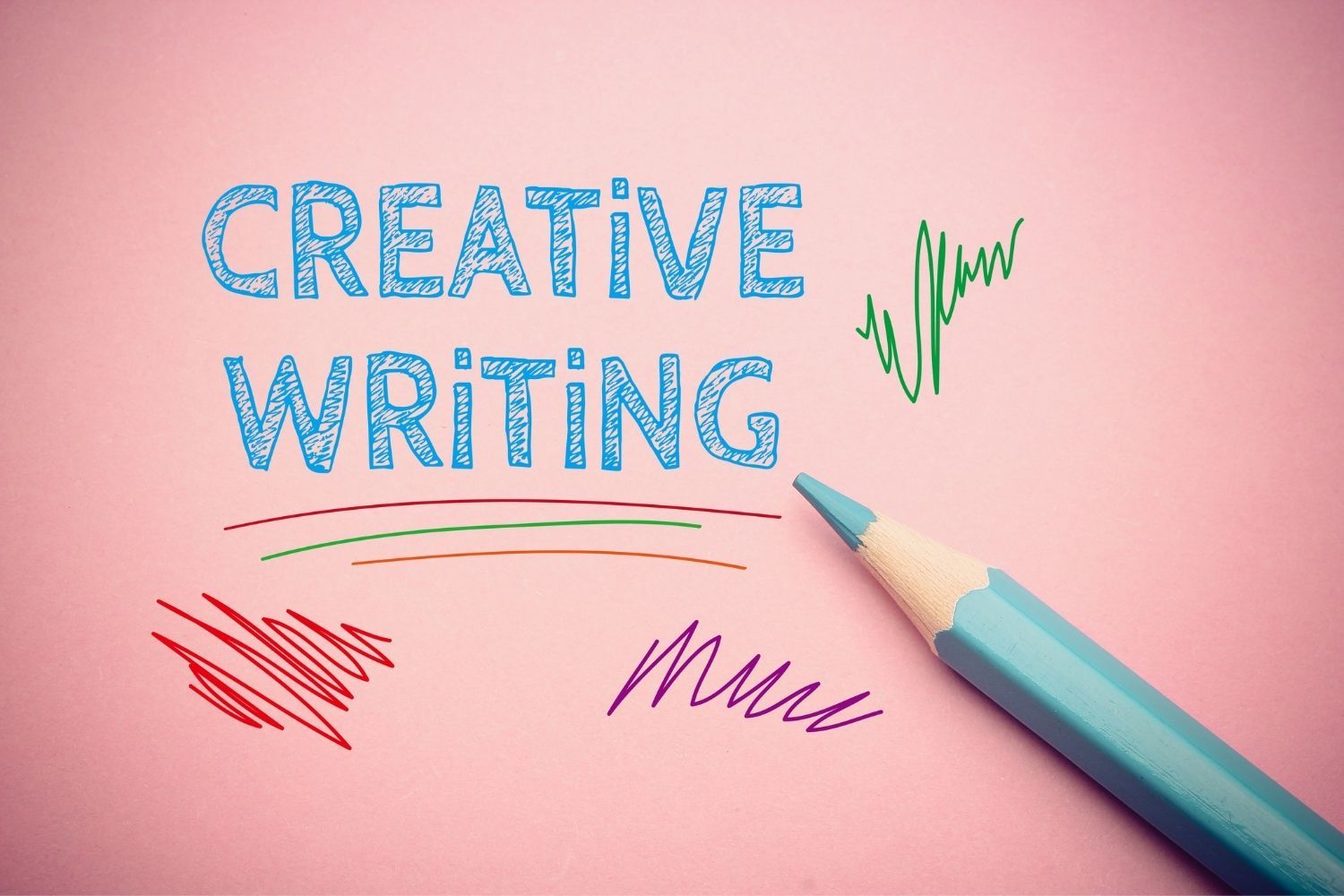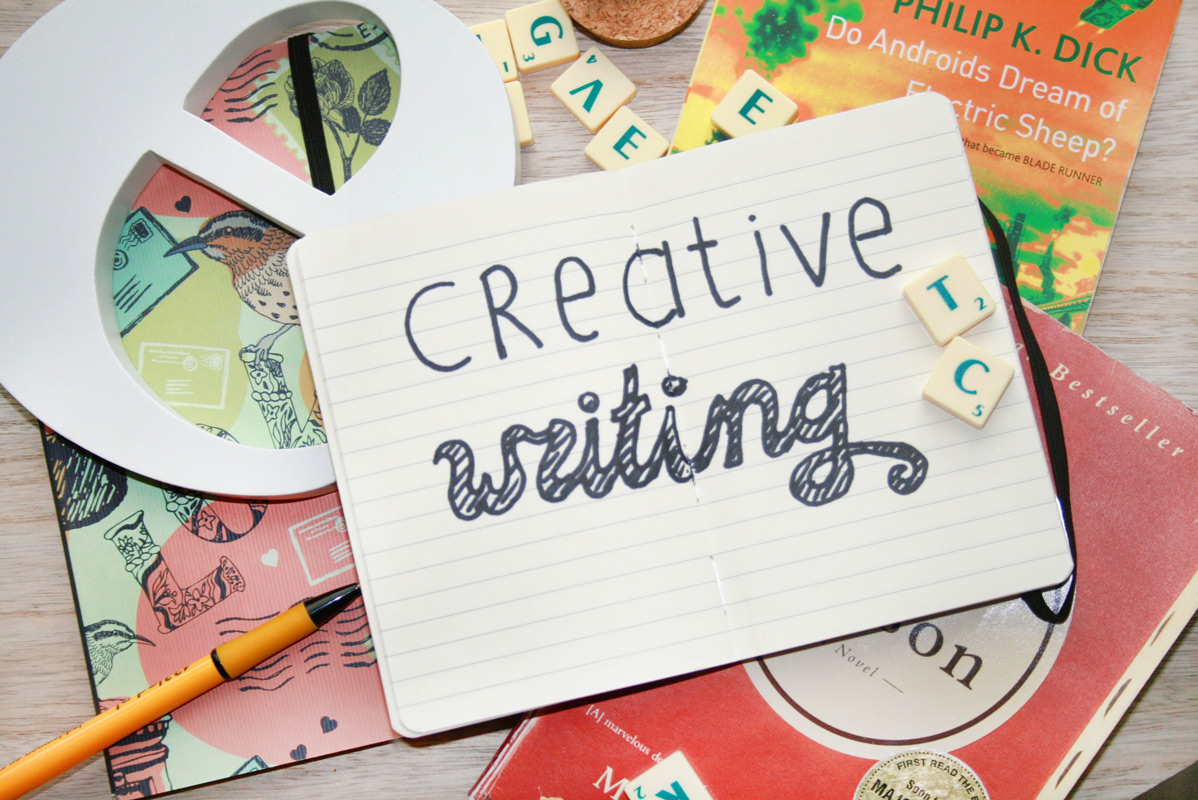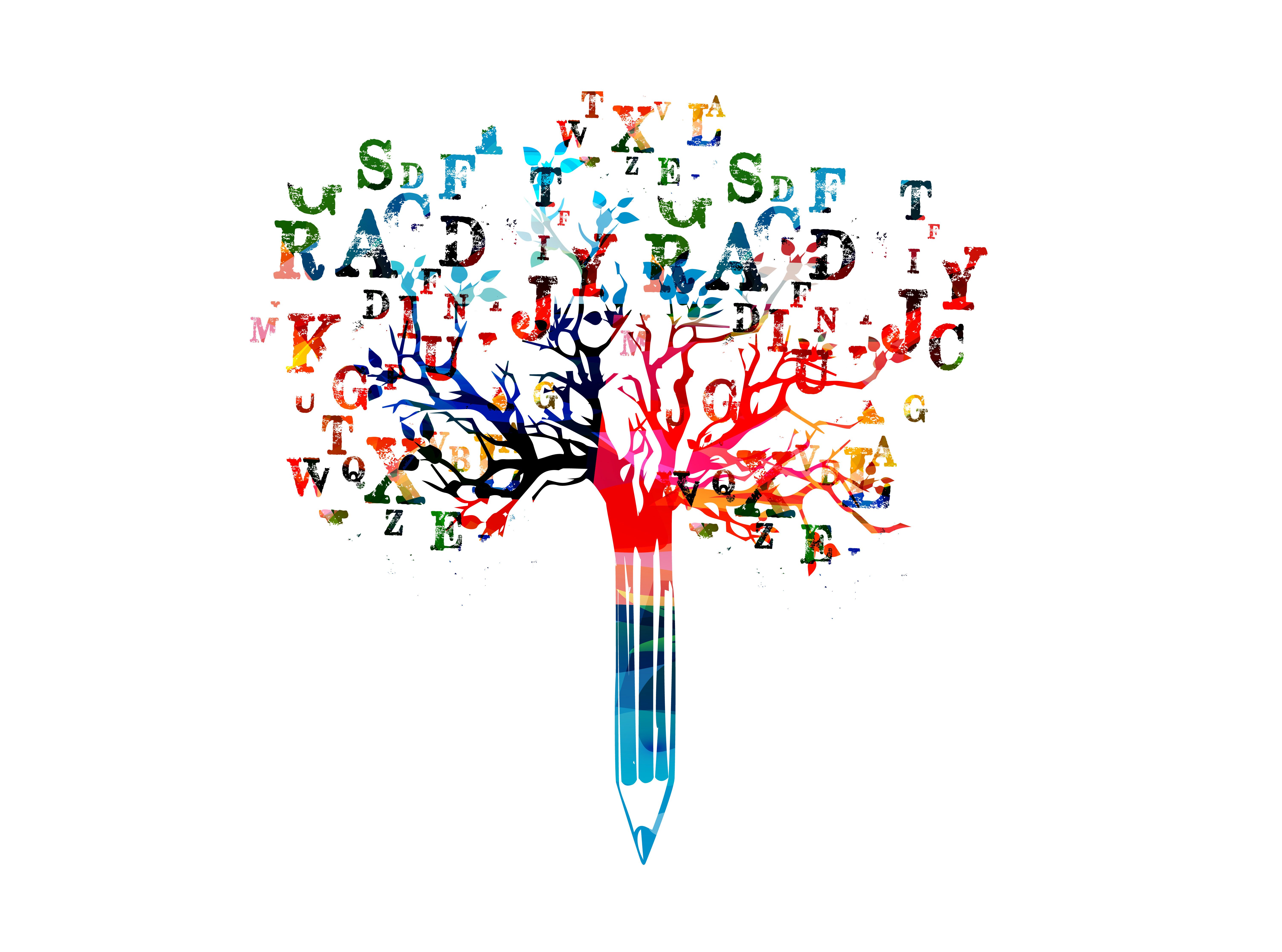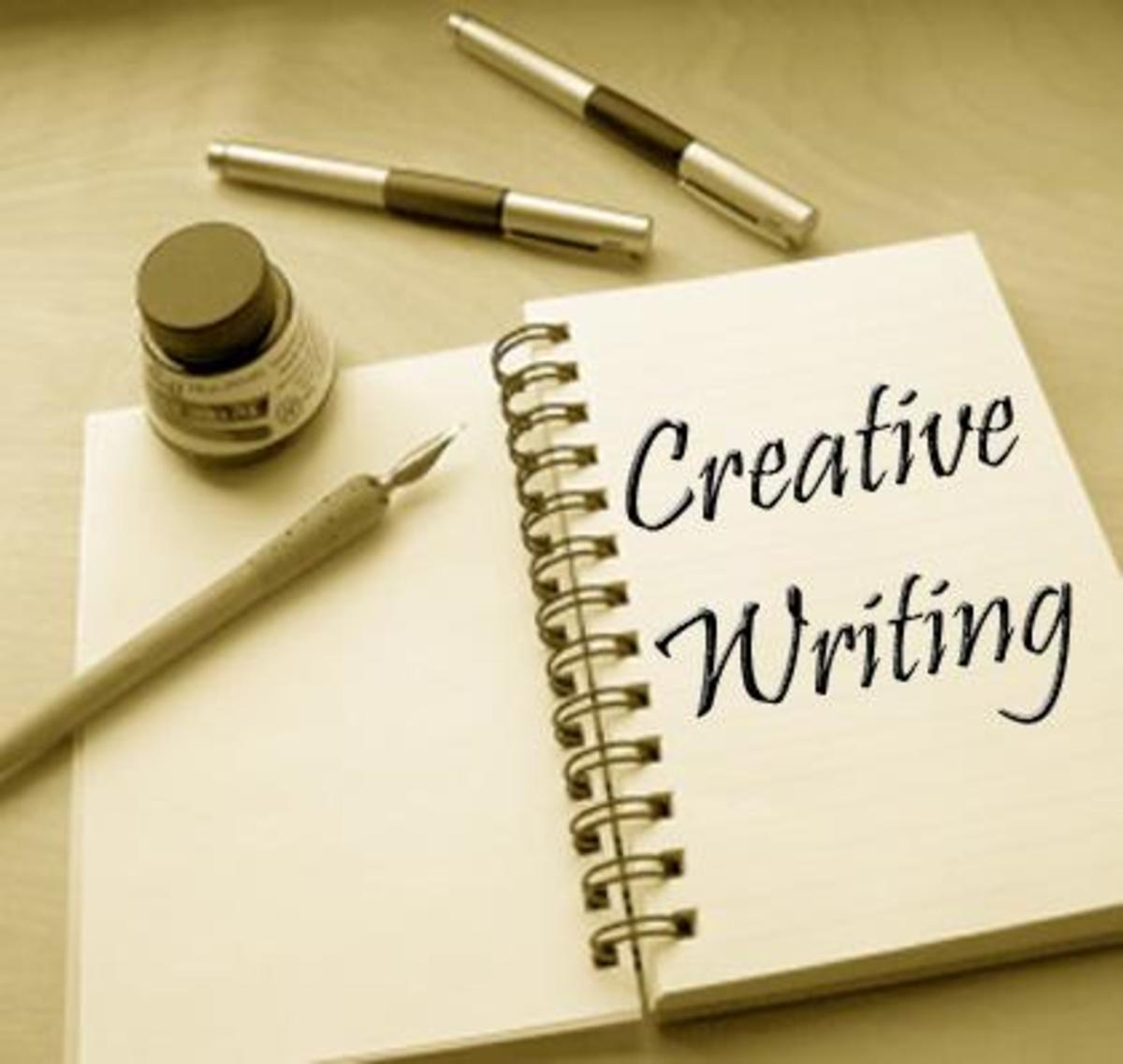Images of creative writing – Images are not mere decorations in creative writing; they are potent tools that evoke emotions, convey narratives, and shape the reader’s experience. In this exploration, we delve into the captivating world of images in creative writing, examining their impact on character development, worldbuilding, and the overall narrative.
From the vivid landscapes that paint a thousand words to the subtle gestures that reveal inner turmoil, images have the power to transport readers into the heart of the story, making them active participants in the unfolding drama.
Visual Storytelling

Images possess an unparalleled ability to stir emotions and convey narratives in creative writing. They can transport readers to distant lands, introduce them to unforgettable characters, and evoke a kaleidoscope of feelings. By incorporating visual imagery, authors can create vivid scenes, develop characters, and leave a lasting impression on readers.
Using Images to Create Vivid Scenes
- Descriptive language: Authors use rich and evocative language to paint a vivid picture in the reader’s mind. They employ sensory details, such as sights, sounds, smells, tastes, and textures, to create an immersive experience.
- Similes and metaphors: These literary devices allow authors to compare two seemingly unrelated things, creating unexpected connections and enhancing the imagery. They can transform ordinary objects into extraordinary symbols.
- Foreshadowing: Authors may use images to foreshadow future events or character developments. By planting subtle hints or visual cues, they can build suspense and create a sense of anticipation.
Developing Characters through Imagery
- Physical appearance: Authors use visual descriptions to establish a character’s physical attributes, such as their height, weight, facial features, and clothing. These details can reveal a character’s personality, background, and social status.
- Body language: Authors can convey a character’s emotions and intentions through their body language. Gestures, posture, and facial expressions provide insights into a character’s inner workings.
- Clothing and accessories: The clothing and accessories a character wears can symbolize their personality, social status, or occupation. They can also hint at their past experiences or aspirations.
Symbolism and Metaphor
In creative writing, images play a crucial role as symbols and metaphors. They serve as evocative and powerful tools that enhance the depth and complexity of the narrative.
By employing images as symbols, authors can represent abstract concepts and ideas in a tangible and relatable manner. For instance, a recurring image of a bird may symbolize freedom or escape, while a shattered mirror could represent the fragility of human relationships.
When searching for inspiring images of creative writing, consider exploring the portfolios of creative agency los angeles ca. These agencies often showcase captivating visuals that evoke the essence of storytelling and imagination. By studying these images, you can gain insights into the visual representation of creative ideas and emotions.
Metaphorical Language
Metaphors, on the other hand, are more explicit comparisons that draw parallels between two seemingly unrelated entities. Authors use metaphors to create vivid and thought-provoking imagery, such as “her laughter was a cascade of silver bells” or “his anger burned like a wildfire.”
Sensory Experiences

Images are a powerful tool for writers to engage the reader’s senses and create a vivid and immersive experience. By evoking sight, sound, smell, taste, and touch, images can transport readers to another world and allow them to experience the story through their own senses.
Sight
Visual imagery is the most common type of image in writing. It appeals to the reader’s sense of sight and can create a vivid picture in their mind. Authors use descriptive language to paint a picture with words, using details of color, shape, size, and texture.
For example, in the opening lines of The Great Gatsby, F. Scott Fitzgerald describes the Valley of Ashes as “a fantastic farm where ashes grow like wheat in the fields.” This image immediately transports the reader to a desolate and barren landscape, setting the tone for the rest of the novel.
Sound
Sound imagery appeals to the reader’s sense of hearing. Authors use words to create the illusion of sound, such as the roar of a lion, the crashing of waves, or the gentle strumming of a guitar. For example, in The Iliad, Homer describes the sound of the Greek army as “a great wave of sound that broke upon the Trojans like a thunderstorm.” This image conveys the overwhelming power and force of the Greek army.
Smell
Smell imagery appeals to the reader’s sense of smell. Authors use words to evoke scents, such as the fresh smell of rain, the pungent odor of decay, or the sweet fragrance of flowers. For example, in To Kill a Mockingbird, Harper Lee describes the smell of the Radley house as “a smell of stale gingerbread and something sour.” This image creates a sense of mystery and foreboding, hinting at the secrets that lie within the house.
Taste
Taste imagery appeals to the reader’s sense of taste. Authors use words to evoke flavors, such as the sweetness of honey, the bitterness of coffee, or the saltiness of the sea. For example, in The Catcher in the Rye, J.D.
Salinger describes the taste of a banana as “waxy and sweet.” This image conveys the protagonist’s youthful innocence and his longing for a simpler time.
Touch
Touch imagery appeals to the reader’s sense of touch. Authors use words to evoke sensations, such as the softness of velvet, the roughness of sandpaper, or the warmth of a hug. For example, in The Scarlet Letter, Nathaniel Hawthorne describes the feeling of Hester Prynne’s scarlet letter as “a burning heat” on her chest.
This image conveys the shame and isolation that Hester experiences as a result of her sin.By stimulating the reader’s senses, images can create a powerful and memorable experience. They can transport readers to another world, allow them to experience the story through their own senses, and create a lasting impression that will stay with them long after they have finished reading.
Cultural and Historical Context

Images in creative writing are often imbued with cultural and historical significance. They can reflect the social norms, traditions, and beliefs of a particular time and place, and can be used to explore important historical events.
Examples
- In Harper Lee’s novel “To Kill a Mockingbird,” the image of the mockingbird is used to symbolize the innocence and vulnerability of children, and the importance of protecting them from harm.
- In Toni Morrison’s novel “Beloved,” the image of the haunted house is used to explore the horrors of slavery and its lasting impact on the African American community.
- In Salman Rushdie’s novel “Midnight’s Children,” the image of the midnight’s children is used to represent the generation of Indians who were born at the stroke of midnight on the day of India’s independence, and the challenges they faced in forging a new nation.
Characterization
Images can provide a wealth of information about a character’s physical appearance, personality traits, and inner conflicts. They can help us to understand what a character is thinking and feeling, and why they behave the way they do.
Physical Appearance
Images can be used to describe a character’s physical appearance in great detail. They can show us what a character looks like, from their hair color to their body type. This information can help us to visualize the character and to understand their physical characteristics.
For example, in the novel “The Great Gatsby,” F. Scott Fitzgerald uses imagery to describe Gatsby’s physical appearance. He writes that Gatsby is “a man of about thirty, with a face that was a study in contradiction—a square face, with a sharp nose and a hard mouth, but with a soft, almost feminine, smile.” This description gives us a clear picture of Gatsby’s physical appearance and helps us to understand his complex personality.
Personality Traits
Images can also be used to reveal a character’s personality traits. They can show us what a character is like on the inside, and what motivates them. This information can help us to understand why a character behaves the way they do, and to empathize with their experiences.
For example, in the novel “To Kill a Mockingbird,” Harper Lee uses imagery to reveal Scout Finch’s personality traits. She writes that Scout is “a tomboy with a big mouth and a bigger heart.” This description gives us a sense of Scout’s personality and helps us to understand why she is such a strong and independent character.
Inner Conflicts
Images can also be used to explore a character’s inner conflicts. They can show us what a character is struggling with, and what they are trying to overcome. This information can help us to understand a character’s motivations and to sympathize with their experiences.
For example, in the novel “The Catcher in the Rye,” J.D. Salinger uses imagery to explore Holden Caulfield’s inner conflicts. He writes that Holden is “a boy who is trying to find his place in the world.” This description gives us a sense of Holden’s inner turmoil and helps us to understand why he is such a troubled character.
Setting and Atmosphere

In creative writing, images play a pivotal role in establishing the setting and atmosphere of a story. They help readers visualize the physical environment and evoke a range of emotions, immersing them in the world of the narrative.
Authors use images to paint vivid pictures of the setting, describing the landscape, architecture, and other sensory details. These images can transport readers to different times and places, creating a sense of reality and presence.
Physical Environment
- Descriptive Language:Authors use rich, descriptive language to create detailed images of the physical environment. They evoke the senses of sight, sound, smell, touch, and taste to bring the setting to life.
- Sensory Details:Images can capture the sensory experiences of characters, such as the feel of a cold wind on their skin or the scent of freshly cut grass.
- Figurative Language:Figurative language, such as similes and metaphors, can enhance the vividness of images and create a lasting impression on readers.
Emotive Atmosphere
- Emotional Connotations:Images can carry emotional connotations that shape the atmosphere of a story. For example, a dark and stormy night can evoke a sense of foreboding, while a bright and sunny day can create a sense of hope.
- Symbolism:Images can be used symbolically to represent deeper themes or ideas. For instance, a broken mirror might symbolize shattered dreams or a storm might symbolize inner turmoil.
- Color Imagery:Colors can play a significant role in creating atmosphere. Warm colors like red and orange can evoke feelings of passion and excitement, while cool colors like blue and green can create a sense of calm and tranquility.
Figurative Language

Images can enhance figurative language, such as similes, metaphors, and personification, by providing a visual representation that makes the comparison more vivid and memorable.
Similes
A simile is a comparison using “like” or “as.” Images can help readers visualize the comparison, making it more impactful. For example, in the line “Her eyes sparkled like diamonds,” the image of diamonds helps the reader understand the brilliance and beauty of the woman’s eyes.
Metaphors
A metaphor is a comparison that states one thing is something else. Images can help readers understand the metaphor by providing a visual representation of the comparison. For example, in the line “Life is a journey,” the image of a journey helps the reader understand the idea that life is a process with challenges and rewards.
Personification
Personification is giving human qualities to non-human things. Images can help readers visualize the personification, making it more believable and engaging. For example, in the line “The wind whispered secrets in her ear,” the image of the wind whispering helps the reader understand the idea that the wind is communicating with the woman.
Provide specific examples of how imagery is used to create vivid and immersive experiences in different genres.

Imagery, the use of sensory details to create mental images, plays a crucial role in crafting vivid and immersive experiences in creative writing. By engaging the reader’s senses, imagery transports them into the world of the story, allowing them to experience the events and emotions firsthand.
In the fantasy genre, imagery often evokes awe and wonder. For instance, in J.R.R. Tolkien’s The Lord of the Rings, the description of the Mines of Moria, with its “dark tunnels, winding and branching endlessly,” creates a palpable sense of claustrophobia and foreboding.
In historical fiction, imagery transports readers to different time periods. In Harper Lee’s To Kill a Mockingbird, the vivid depiction of the Jim Crow South, with its “white clapboard houses” and “red dirt roads,” immerses readers in the social and racial tensions of the era.
In science fiction, imagery often explores the boundaries of human imagination. In Frank Herbert’s Dune, the description of the planet Arrakis, with its “giant sandworms” and “shimmering deserts,” creates a sense of alien wonder and danger.
Visual Description Techniques: Images Of Creative Writing
Visual description is a powerful tool that authors use to create vivid and immersive experiences for readers. By employing sensory details, figurative language, and vivid verbs, authors can transport readers into their stories and allow them to see, hear, smell, taste, and feel the world they’ve created.
There are a number of different techniques that authors can use to describe images effectively. Some of the most common include:
Sensory Details
Sensory details are descriptions that appeal to the five senses. By using sensory details, authors can create a more immersive experience for readers and help them to connect with the story on a deeper level.
For example, in the following passage, the author uses sensory details to describe the setting of a forest:
The forest was a symphony of green. The leaves of the trees rustled softly in the breeze, and the air was filled with the scent of pine needles and damp earth. The ground was covered in a thick layer of moss, and the sunlight filtered through the canopy of leaves, creating a dappled pattern on the forest floor.
Figurative Language
Figurative language is a great way to add depth and interest to visual descriptions. Similes, metaphors, and personification can all be used to create vivid and memorable images in the reader’s mind.
For example, in the following passage, the author uses a simile to describe the movement of a river:
The river flowed like a silver ribbon through the valley.
Vivid Verbs
Vivid verbs are verbs that are active, descriptive, and specific. They help to create a more dynamic and engaging visual description.
For example, in the following passage, the author uses vivid verbs to describe the actions of a bird:
The bird soared through the air, its wings beating rapidly. It swooped and dived, its sharp eyes scanning the ground below.
Common Pitfalls
There are a few common pitfalls that authors should avoid when writing visual descriptions. These include:
- Using too many adjectives and adverbs. This can make the description cluttered and difficult to read.
- Using vague or general language. This can make the description bland and uninteresting.
- Focusing too much on the physical appearance of things. This can make the description superficial and lacking in depth.
Tips
Here are a few tips for writing effective visual descriptions:
- Use sensory details to appeal to the five senses.
- Use figurative language to add depth and interest.
- Use vivid verbs to create a dynamic and engaging description.
- Avoid using too many adjectives and adverbs.
- Avoid using vague or general language.
- Focus on the details that are most important to the story.
Table
| Technique | Description |
|---|---|
| Sensory Details | Descriptions that appeal to the five senses. |
| Figurative Language | Similes, metaphors, and personification can all be used to create vivid and memorable images. |
| Vivid Verbs | Active, descriptive, and specific verbs help to create a more dynamic and engaging visual description. |
Sample Paragraph
The following paragraph is an example of descriptive writing that uses a variety of techniques to create vivid imagery:
The old woman sat on the porch, her gnarled hands folded in her lap. Her eyes were closed, and her face was turned towards the sun. The wrinkles on her face were like a roadmap of her life, each line telling a story of joy, sorrow, and loss. Her hair was white as snow, and it fell in waves around her shoulders. She was dressed in a simple cotton dress, and her feet were bare. The only sound was the gentle chirping of birds in the trees.
This paragraph uses sensory details, figurative language, and vivid verbs to create a vivid and memorable image of an old woman sitting on a porch.
Impact on the Reader

Images have a profound impact on readers, both psychologically and emotionally. They can influence the reader’s interpretation of the text, create lasting impressions, and evoke a range of emotions.
Images appeal to the reader’s senses, creating a more immersive and engaging experience. They can transport the reader to different worlds, introduce new perspectives, and stimulate the imagination.
Psychological Impact
- Cognitive Processing:Images aid in comprehension by making complex concepts more accessible and easier to remember.
- Memory Enhancement:Images improve memory recall and retention, as they create visual associations that are more easily stored and retrieved.
- Imagination and Creativity:Images stimulate the imagination, allowing readers to visualize and engage with the text on a deeper level.
Emotional Impact
- Emotional Responses:Images can elicit a wide range of emotions, from joy and awe to sadness and fear, by tapping into the reader’s personal experiences and associations.
- Empathy and Understanding:Images help readers empathize with characters and situations, fostering a deeper understanding of the text’s themes and messages.
- Aesthetic Appreciation:Images add an aesthetic dimension to the text, enhancing the reader’s enjoyment and appreciation of the work.
Examples of Effective Imagery

Effective imagery is a powerful tool that writers can use to create vivid and immersive experiences for their readers. When done well, imagery can transport readers to another time and place, introduce them to new characters, and evoke strong emotions.
In this section, we will provide a collection of powerful and evocative images from renowned authors, analyze the techniques used to create these images, and discuss their impact on the reader.
Techniques for Creating Effective Imagery
There are a number of techniques that writers can use to create effective imagery. These techniques include:
- Using sensory details to appeal to the reader’s senses of sight, sound, smell, taste, and touch.
- Using figurative language, such as metaphors, similes, and personification, to create vivid and memorable images.
- Using specific and concrete details to create a sense of realism.
- Using rhythm and flow to create a musical effect.
- Using contrast to create tension and interest.
Examples of Effective Imagery from Literature
Here are a few examples of effective imagery from literature:
- From “The Great Gatsby” by F. Scott Fitzgerald:“The lawn started at the beach and ran toward the front door for a quarter of a mile, jumping over sundials and brick walks and burning gardens.”
- From “To Kill a Mockingbird” by Harper Lee:“The mockingbirds don’t do one thing but make music for us to enjoy. They don’t eat up people’s gardens, don’t nest in corncribs, they don’t do one thing but sing their hearts out for us. That’s why it’s a sin to kill a mockingbird.”
- From “The Catcher in the Rye” by J.D. Salinger:“I’m standing on the edge of some crazy cliff. What I have to do, I have to catch everybody if they start to go over the cliff – I mean if they’re running and they don’t look where they’re going I have to come out from somewhere and catch them.
That’s all I’d do all day. I’d just be the catcher in the rye and all.”
The Impact of Effective Imagery
Effective imagery can have a profound impact on the reader. It can transport readers to another time and place, introduce them to new characters, and evoke strong emotions. Imagery can also help readers to understand the author’s purpose and theme.
When used effectively, imagery can make a piece of writing more engaging, memorable, and meaningful.
Exercise: Writing with Effective Imagery
Now that you have learned about the techniques of effective imagery, try writing a short piece of creative writing that incorporates these techniques. Use your senses to create vivid and memorable images. Be specific and concrete in your details. Use figurative language to create a musical effect.
And use contrast to create tension and interest.
Create a Gallery of Images

An image gallery can serve as a valuable resource for creative writers, providing visual inspiration and enhancing the vividness of their written descriptions. Here’s how to create an HTML table with four responsive columns to showcase a gallery of images related to creative writing:
HTML Table Structure
Create a table using the
| tag. Set the width of each column using the width attribute within the | tag.
Image InsertionInsert images into each cell using the
Context and Download ButtonProvide additional context or information about the image in the corresponding cell using the
Styling and AccessibilityUse CSS to style the gallery and make it visually appealing. Ensure the gallery is mobile-friendly and accessible to users with disabilities by adding appropriate CSS styles. Organize Images by Theme
To organize images by theme, begin by identifying the different themes present in the text. Common themes include nature, love, loss, and conflict. Once the themes have been identified, group the images accordingly. Each theme should have a clear and concise title that accurately reflects the content of the images within it. The images within each theme should contribute to the overall narrative or message of the text. For example, images of nature may be used to establish the setting and create a sense of place, while images of love may depict the protagonist’s romantic feelings. Images of loss may convey the protagonist’s grief and sorrow, while images of conflict may foreshadow an upcoming confrontation. The following table provides a list of images, their themes, and their contributions to the narrative or message:
The imagery in the text is carefully chosen to create a vivid and immersive visual experience that complements and enhances the narrative. The different themes of nature, love, loss, and conflict work together to create a cohesive and meaningful visual tapestry that reflects the protagonist’s journey and the overall message of the text. Design an Interactive Image MapInteractive image maps are a powerful tool for engaging readers and providing additional context and information. By creating an HTML image map, you can allow readers to click on different areas of an image to reveal additional information, such as character profiles, plot points, or historical context.This interactive element greatly enhances the reader’s engagement with the text. It allows them to explore the world of the story in a more immersive way, and to gain a deeper understanding of the characters and events. Creating an Interactive Image Map, Images of creative writingTo create an interactive image map, you will need to use HTML code. The basic structure of an image map is as follows:“`html “`The “src” attribute of the |
|---|

